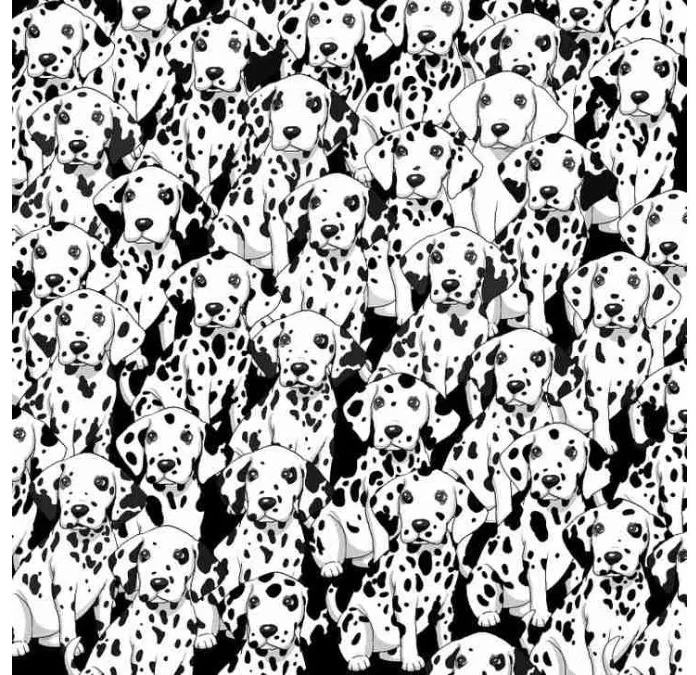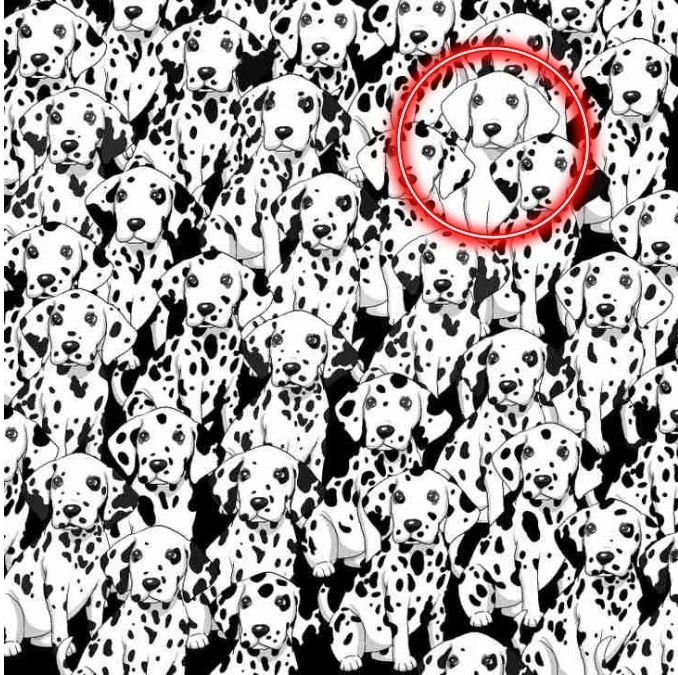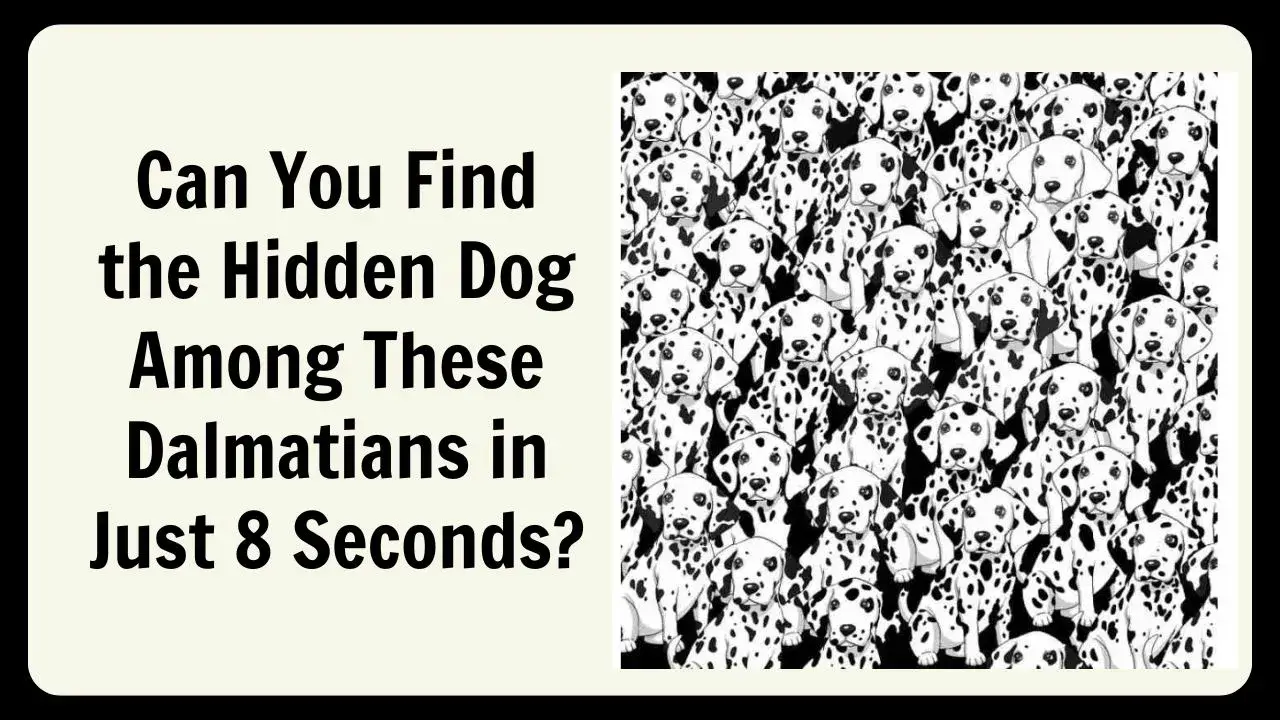People all throughout the world have long been captivated by optical illusions. They test our ability to focus, alter our perception, and occasionally even uncover fascinating facts about how our brains interpret visual data. A compelling optical illusion that challenges viewers to identify a concealed dog among a bunch of Dalmatians in eight seconds is one of the most recent viral sensations on the internet. This task appears straightforward at first, but it soon turns into a test of your ability to observe and pay attention to details.
Why Do People Love Optical Illusions?
By modifying visual clues, optical illusions have the rare capacity to deceive our brains. They draw attention to the distinction between reality and perception. The difficulty in this particular illusion is identifying one well-camouflaged dog from a large number of others that have similar black-and-white speckled coats. The intricacy arises from the fact that the concealed dog is almost imperceptible at first look due to its flawless blending with the surrounding Dalmatians’ pattern.
These illusions are instructive as well as entertaining. They stimulate critical thinking in our brains, which improves focus and promotes mindfulness. You must slow down and carefully inspect the image rather than hurrying through it in order to spot the hidden dog in the illusion. This is an exercise in patience and observation.
An explanation of the Hidden Dog Challenge
Usually, the picture shows a bunch of energetic Dalmatians, all of them sporting their recognizable black spots on white coats. Because of a combination of shadows, patterns, and placement, the concealed dog first looks identical to the others. The dog may be partially hidden, staring in a different direction, or concealed by overlapping dots, creating a visual conundrum.

Many viewers discover that when they first examine the image, all they see is a group of identical pups. However, the hidden dog begins to show as people pay more attention to the details, like the alignment of spots or the shapes of the legs or ears. Since the challenge has been timed to evoke a sense of urgency and excitement, the real test will be if you can identify the dog in eight seconds.
Why Is This Illusion So Challenging?
The difficulty is caused by a number of causes. First of all, Dalmatians are renowned for having distinctive spotted coats that, when grouped together, naturally confuse the eye. The pattern interferes with the brain’s rapid separation of distinct shapes. Second, contrast mixing and visual clutter are used in the illusion to obscure the hidden object and make it less noticeable.
Furthermore, rather of concentrating on subtle variations, the brain prefers to search for well-known shapes and patterns. Your brain initially classifies the entire sight as a uniform pattern rather than a collection of distinct animals because the hidden dog’s traits overlap with the spots of the other canines.
How to Increase the Probability of Finding the Hidden Dog
Here are some pointers in case you are having trouble:
- Don’t rush and take your time. Subtle characteristics like an ear’s shape or a tail’s curve can occasionally hold the secret.
- Check for anomalies or pauses in the pattern. It’s possible that the concealed dog’s spots won’t line up exactly with the others.
- Pay more attention to the outlines than the actual spots. Clues may be found in shapes like eyes, paws, or noses.
- Make use of your peripheral vision. Your brain may occasionally be able to identify the hidden figure if you look slightly away from the image’s center.

An entertaining and thought-provoking brainteaser that’s ideal for a quick mental workout is the “spot the hidden dog among Dalmatians” optical illusion. It tests our capacity for sustained concentration and reveals the amazing ways in which our brains process intricate images. Try this one if you like riddles and visual challenges, but be advised that it’s not as simple as it seems!

